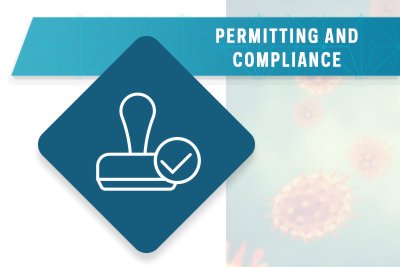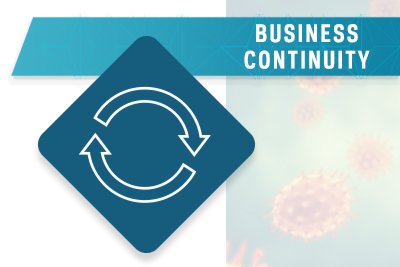Obtaining permits and ensuring compliance is complex in the best of times. The COVID-19 epidemic raises that complexity to a whole new level. This is some of the guidance we’ve been providing clients to help them navigate these unchartered waters.
How do I handle compliance deadlines for sampling, reporting, or permit renewals if my site faces a shutdown?
Assume your compliance deadlines or obligations have not changed unless you’ve received written guidance from the responsible agency. In a March 26, 2020, memorandum, the Environmental Protection Agency provided guidance on federal enforcement and compliance deadlines during the COVID-19 crisis. However, there are many regulatory programs enforced at the state and local level. For instance, state stormwater management obligations won’t necessarily change just because your facility is offline. And some jurisdictions may put out COVID-19 specific compliance requirements. It’s a challenge to stay on top of local movements, but it’s important to proactively monitor these changes.
We recommend contacting the appropriate agencies responsible for your compliance obligations and documenting how they recommend complying with your requirements. If you are not able to meet certain compliance requirements due to the COVID-19 situation, it is important to document the details of any deficiencies and contact the appropriate agency as soon as possible.
Are regulatory agencies still operating?
Most government agencies are considered essential and continue to operate. States that implemented stay-at-home orders may be prioritizing their activities and having employees work remotely — many for the first time in their careers. Low-priority activities could include administrative permit modifications, permit renewals, and agency inspections. If you have questions, you may not be able to reach a live person when you call. Instead, leave a voicemail — and an email describing the issue and the actions you are taking — and the agency should get back to you. It is important to document any incidents that could lead to a non-compliance issue, as the regulators may not be readily available. Having that documentation will serve you well down the line.
I need a permit to keep my project moving forward. Will I be able to get one?
As stated above, most government agencies are considered essential and continue to operate. Permits for new projects that require approval before construction/installation can begin would likely be considered high priority. However, due to the dynamic conditions, you’ll want to actively engage and advocate with the agencies for your project.
We are bringing in large quantities of cleaning chemicals to disinfect our facilities to keep our employees safe. Are there any environmental, health, and safety regulatory concerns with this?
Bringing these chemicals in can trigger several regulatory programs depending on the quantity of chemical on-site and how it is being used. You may need to take immediate actions to comply with regulatory requirements, such as hazard communication, stormwater permits, and chemical inventory reporting. You also may have future obligations under regulatory programs such as Toxic Release Inventory reporting, emission inventories, and waste storage and disposal. These requirements can vary by state. It is critical to understand the widespread regulatory implications that the new chemical usage presents so you can ensure compliance and your employees’ safety.
If an on-site employee is diagnosed with COVID-19, what are my communication responsibilities to OSHA and my employees?
OSHA does count COVID-19 as a recordable illness if it is linked to workplace exposure. So, all of the OSHA reporting requirements would need to be followed. If there is medical treatment beyond first aid, it would have to go on the OSHA log. And if the treatment resulted in in-patient hospitalization, you would need to report it to OSHA within 24 hours. Lastly, a fatality would require notification to OSHA within eight hours.
Regarding employees contracting COVID-19, the protocol Haley & Aldrich has established is, first, to send the employee home. We then would discuss with the employee who they have come in contact with or worked in close proximity to at our site during the previous 14 days. We would send those employees home if we considered it reasonable that they had come into contact with the person infected with COVID-19. We would also notify any contractors, vendors, or other groups that may have been on the site to the best of our knowledge. It is important to not identify by name the infected employee, so you don’t violate medical privacy laws.”
Your human resources department may have a protocol to follow regarding notifying the employee’s co-workers. This is a recent Harvard Business Review article that gives guidance.
Every regulatory situation is unique. Your main priority is to continue to keep people safe and healthy while maintaining your operational needs by understanding your regulatory obligations and working with your regulatory agencies. You want to be ready to go when your facility comes back to normal operations. We are available to help with environmental, health, and safety compliance planning at your sites to support your business continuity.
Published: 4/13/2020
Authors

Senior Technical Expert

Technical Expert, Health and Safety




